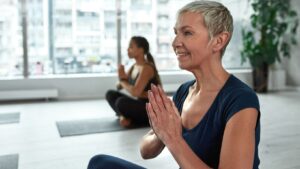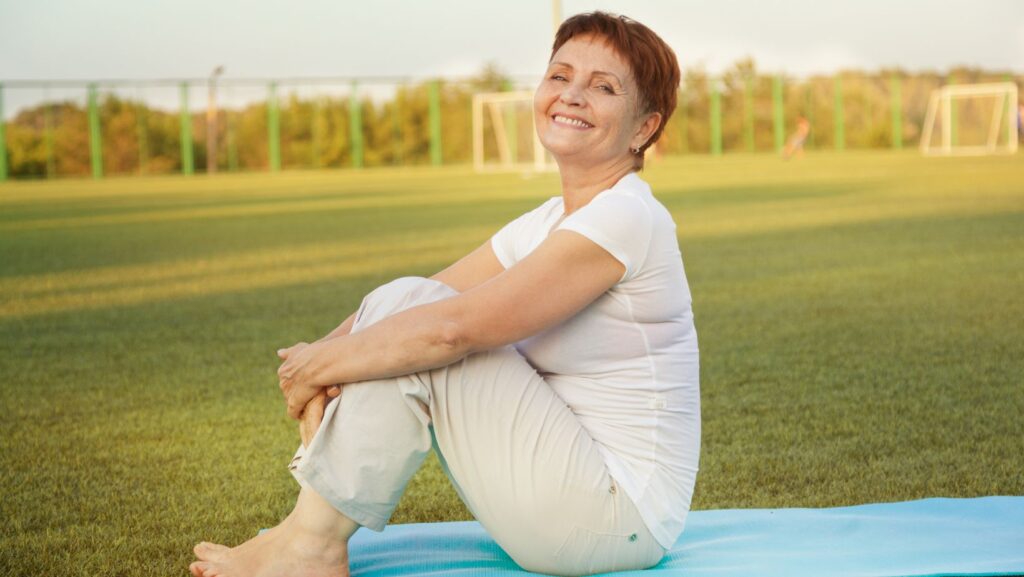Staying fit after 50 doesn’t have to be an uphill battle. With the right strategies, anyone can maintain strength, flexibility, and vitality well into their golden years. As the body changes, so should the approach to fitness. It’s all about working smarter, not harder, to achieve lasting health benefits.
For those over 50, it’s essential to embrace a fitness mindset that values consistency and adaptability. By making small adjustments and leveraging expert tips, anyone can enjoy a more active and fulfilling lifestyle. Whether it’s through mindful movement or smart recovery practices, these hacks are designed to keep individuals feeling their best.
Fitness Hacks for Over 50
 Incorporating fitness hacks after 50 allows individuals to maintain vitality and health. Prioritizing essential strategies like joint-friendly exercises reduces the risk of injury. Incorporate activities such as swimming or cycling that minimize joint stress. Balance workouts effectively improve stability, lowering the chance of falls. Yoga and tai chi offer gentle strength-building and flexibility enhancements.
Incorporating fitness hacks after 50 allows individuals to maintain vitality and health. Prioritizing essential strategies like joint-friendly exercises reduces the risk of injury. Incorporate activities such as swimming or cycling that minimize joint stress. Balance workouts effectively improve stability, lowering the chance of falls. Yoga and tai chi offer gentle strength-building and flexibility enhancements.
Consistency remains key in fitness after 50. Establishing a regular routine makes it easier to achieve goals, even with a busy lifestyle. Adapt workouts to accommodate changing energy levels and abilities. Listening to one’s body ensures a safe and effective fitness journey.
Incorporate recovery regularly in fitness after 50, using foam rollers or massage to alleviate muscle tension. Proper hydration and nutritious diets bolster energy levels and enhance recovery processes. Embracing these fitness hacks can lead to a more active, fulfilling lifestyle, fostering well-being through the decades.
Nutrition for Active Aging
 Nutrition plays a crucial role in supporting an active lifestyle for those over 50. A well-balanced diet boosts energy levels and aids recovery. Including lean proteins like chicken and fish helps maintain muscle mass. Whole grains such as brown rice and oats provide sustained energy. Incorporating healthy fats, like avocados and nuts, supports joint health and brain function.
Nutrition plays a crucial role in supporting an active lifestyle for those over 50. A well-balanced diet boosts energy levels and aids recovery. Including lean proteins like chicken and fish helps maintain muscle mass. Whole grains such as brown rice and oats provide sustained energy. Incorporating healthy fats, like avocados and nuts, supports joint health and brain function.
Essential nutrients for active aging are calcium and vitamin D. These promote bone health, reducing the risk of fractures. Dairy products, leafy greens, and fortified foods are great sources. Staying hydrated is fundamental, so consuming sufficient water and herbal teas throughout the day is advisable.
Antioxidant-rich foods like berries and dark chocolate combat oxidative stress and inflammation. These aid in maintaining cellular health. Omega-3 fatty acids, found in flaxseeds and salmon, also support heart health and reduce inflammation. By focusing on these nutrition elements, individuals over 50 can enhance their vitality and sustain an active aging process.
Mental Health and Fitness
 Mental health and fitness have a significant connection, particularly for individuals over 50. Regular physical activity can improve mental health, reducing anxiety and depression symptoms by releasing endorphins. It also enhances sleep quality, leading to better mood and cognitive function. Engaging in physical activities that challenge the mind, like dance or yoga, boosts both mental health and fitness by stimulating brain function.
Mental health and fitness have a significant connection, particularly for individuals over 50. Regular physical activity can improve mental health, reducing anxiety and depression symptoms by releasing endorphins. It also enhances sleep quality, leading to better mood and cognitive function. Engaging in physical activities that challenge the mind, like dance or yoga, boosts both mental health and fitness by stimulating brain function.
Mindfulness techniques, such as meditation, complement fitness routines. They increase focus and reduce stress, thereby enhancing mental clarity. Social activities, including group workouts or walking clubs, improve social interaction and contribute positively to mental health and fitness. By maintaining consistent routines, individuals can see improvements in both their physical and mental well-being. Monitoring these factors ensures a comprehensive approach to aging healthily and actively. Mental health and fitness, interconnected, play critical roles in leading a fulfilling life after 50.
Technology and Fitness
Embracing technology can significantly enhance fitness journeys for those over 50. From wearable fitness trackers that monitor heart rate and activity levels to apps offering personalized workout plans, technology provides valuable tools for maintaining motivation and tracking progress. Virtual classes and online communities offer flexibility and support, making it easier to stay active and engaged. By integrating technology into their fitness routines, individuals can access tailored resources and connect with others, fostering a sense of community and accountability. As they navigate the path to well-being, leveraging these technological advancements ensures a more informed and empowered approach to fitness after 50.

